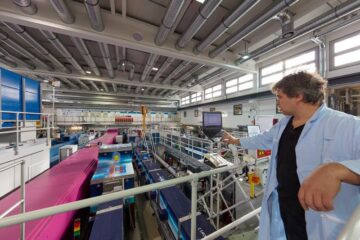NeuroTox Chips – The Network Formation Assay: A microarray for spatially standardized neurotoxicity screening

– Patterning of neuronal cells within a microarray, with each node equally spaced from neighbouring nodes
– The array format provides assay coordinates, defines neurite length and measures connectivity, a feature central to brain function – e. g. memory and learning – The simple analytical display enables ultrafast (x70), reproducible, quantitative and predictive compound testing Commercial Opportunity The challenge is underpinned by global policy, notably the EPA and Europe’s REACH legislation. There is a strict deadline to provide comprehensive toxicity data, and yet 30,000 compounds are still not adequately tested. Toxicity testing using animal experiments is ethically troubled and extremely expensive and time consuming. In vitro methods are sought to replace the animal tests. However, in neurotoxicology data from in vitro assays fail to correlate with the in vivo data. Of these, a good choice is neurite outgrowth analysis but this approach is enormously difficult and time consuming. Our invention provides an analytical display for ultrafast and predictive compound screening.
Weitere Informationen: PDF
PROvendis GmbH
Tel.: +49 (0)208/94105 10
Ansprechpartner
Dipl.-Ing. Alfred Schillert
Media Contact
Alle Nachrichten aus der Kategorie: Technologieangebote
Neueste Beiträge

Bakterien für klimaneutrale Chemikalien der Zukunft
Forschende an der ETH Zürich haben Bakterien im Labor so herangezüchtet, dass sie Methanol effizient verwerten können. Jetzt lässt sich der Stoffwechsel dieser Bakterien anzapfen, um wertvolle Produkte herzustellen, die…

Batterien: Heute die Materialien von morgen modellieren
Welche Faktoren bestimmen, wie schnell sich eine Batterie laden lässt? Dieser und weiteren Fragen gehen Forschende am Karlsruher Institut für Technologie (KIT) mit computergestützten Simulationen nach. Mikrostrukturmodelle tragen dazu bei,…

Porosität von Sedimentgestein mit Neutronen untersucht
Forschung am FRM II zu geologischen Lagerstätten. Dauerhafte unterirdische Lagerung von CO2 Poren so klein wie Bakterien Porenmessung mit Neutronen auf den Nanometer genau Ob Sedimentgesteine fossile Kohlenwasserstoffe speichern können…

















